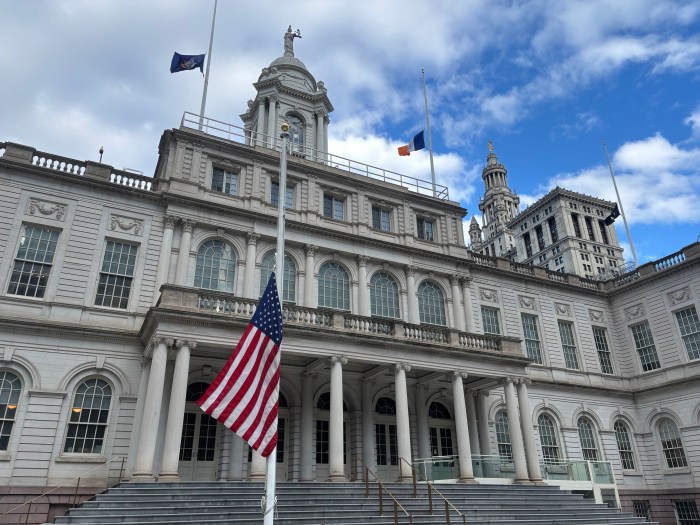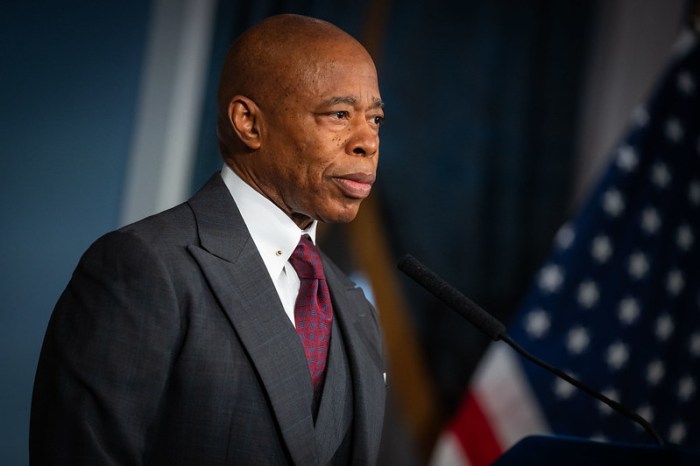The City Council plans action to reverse some of the Mayor’s serious spending reductions in the proposed City budget. Spending cuts in important services like education or public safety or the dollar amount of the cuts sound like the major issues but history tells us that while those services are vital to all New Yorkers, the amount of the reductions is the beginning, not the end of the story.
The level of cuts may not be as important as how they are ultimately administered and who will suffer the most.
In the mid-1970’s, the City of New York faced bankruptcy with a budget that was seriously out of control. The Mayor had to make deep and difficult cuts to the City’s budget. One of the guiding principles of then-Mayor Abe Beame’s budgetary decision-making was to single out City contracts as a key target for budget cuts, as opposed to cuts in city agencies and their employees, seeking to steer clear of cuts that would reduce the size of the City’s workforce and negatively affecting city workers. Of course, contracts for goods are different from contracts for services. And one area of services governed under those contracts involved contracts with hundreds of not-for-profits, especially those that knitted together the social safety net and protected the City’s most vulnerable populations and the City budget from higher costs.
Those not-for-profit agency contracts and their employees were directly involved in delivering some of the most vitally important mental health services, after-school programs, services to vulnerable seniors, services to previously incarcerated, provision of child welfare services, employment and training, services to the handicapped and more. Most New Yorkers might want those populations, the City’s most vulnerable, to be the last targeted to have services swiped away and might think erroneously that only City workers deliver those services. Many labor economists would urge a different set of action as they calculate the cost to the City bottom line of turning those vulnerable New Yorkers already in poverty or on the cusp of poverty into populating a “poverty ocean” and leading to more costly services, declining tax revenues and an increase in crime and homelessness.
But that was exactly what happened in the ’70s, and the City and those vulnerable New Yorkers paid a huge price, and not just over one year, but for well over a decade with many elected officials pledging that misguided decisions such as what took place in the 70’s would never happen again. We would learn from the past and never repeat such flawed actions.
Well, hold onto your seats New Yorkers, the disaster of the 70’s could actually repeat itself once again. And in fact the storm clouds are massing and a hurricane is brewing.
Mayor Adams has informed the City’s agencies and their not-for-profit social service providers that they need to prepare for a series of very steep budget cuts, roughly a 15% cut over the next year. Each city agency is being asked to reduce its budget by 5% in the 2nd quarter of the year, another 5% in the 3rd quarter and another 5% in the final quarter. If city agencies protect their City workers and target their cuts by reducing contracts for vital safety net services as the first place to cut, the cuts could be larger than 15% and as a result, hundreds of thousands of New Yorkers would see the vital services they rely upon slashed or eliminated. Many not-for-profits that are totally dependent on these contracts to stay in business would be forced to fire large numbers of staff, and some would go out of business, leaving their clients in serious peril. And, it wouldn’t stop there. It would lead to increased spending across City agencies to address the problems created, along with a reduction in taxes, and increased need for policing and incarceration. And as the example of the 70’s proved, costs would skyrocket and not just over one year. And as took place in the 70’s flirt with bankruptcy recovery would not take months, it would take a decade
Of course, there are other options. The Independent Budget Office released a report outlining a number of ways to avert cuts focusing on administrative reductions and ways to increase revenue. Social services contracts that preserve the social safety net need to be made as much a priority as our City workers. But repeating the disaster of the 1970s would be a huge mistake. Those that don’t learn from history will see it repeated.
Stanley S Litow, former Deputy NYC Schools Chancellor


































